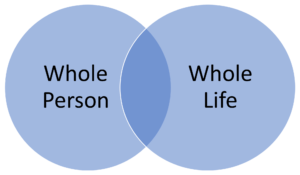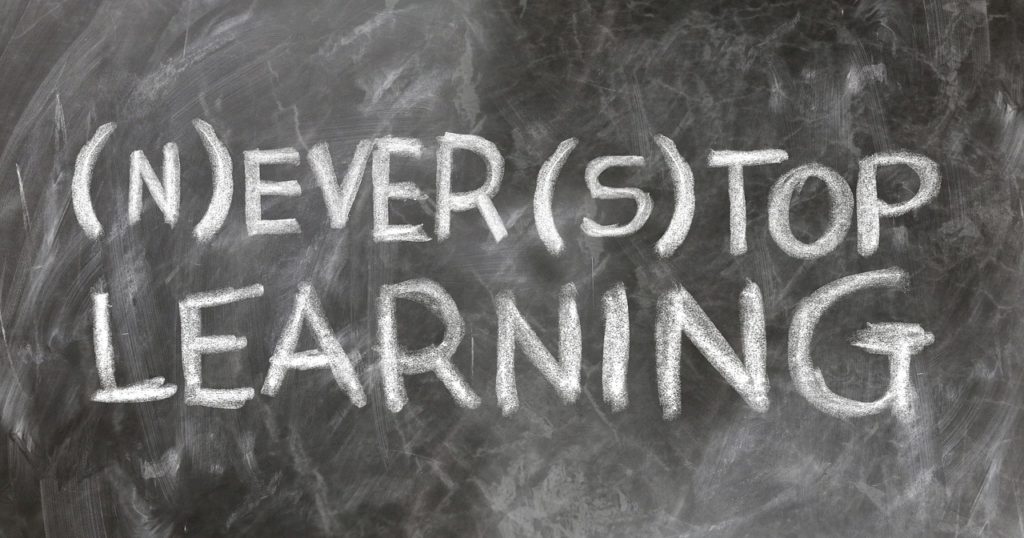We should no longer assiduously acquire knowledge once and for all, but learn how to build up a continually evolving body of knowledge all through life—’learn to be’
UNESCO Faure Report – Learning to Be 1972
1972 and Learning to Be
In 1972, a document was published by UNESCO prepared by the International Commission on the Development of Education. The title of this document was Learning to Be, The world of education today and tomorrow otherwise known as the Faure Report. I learned about this report as a I researched the early days of seeing education as a primary vehicle for creating a better world. This document highlighted ideas and areas which are now widely accepted and used. It begins with four major assumption which “underlay” the work, and which are the focus of this blog.
The four assumptions are the following:
- The existence of an international community.
- A belief in democracy, and that education is the “keystone” of democracy.
- The need for the development of the whole person
- The need for a “lifelong education.”
It was the Faure report of 1972, which ultimately led to lifelong learning becoming the focus of education within UNESCO and the creation of the UNESCO Institute for Lifelong which was changed in 2006 to the Institute for Lifelong Learning (UIL). It publishes The International Review of Education – Journal of Lifelong Learning.
It is amazing to think now how far reaching the “Learning to Be” report (a.k.a. Faure report) was now 50 years ago, and it only reinforces the importance of lifelong learning. The organization goes further to point to a “holistic understanding of adult learning” within a “life-wide and lifelong learning perspective.”
The preamble, aptly titled “Education and Man’s Destiny” is a summary of the world as it was in 1972, the “great changes” of the time, and role of education in navigating that world and the future they would soon face. . . and one that we have now lived. This is a must read for anyone following the history of education, but it is also useful for learning. One major takeaway from my initial reading was the intersection of holistic education and lifelong learning, which are not often discussed together, and which I refer to as Whole Person, Whole Life Learning.
Whole Person Learning
The education of the whole person, otherwise known as a holistic education, goes beyond what can be done in the confines of the classroom. Its emphasis is on the full development of the individual so that they can obtain a deeper, more meaningful experience throughout life. Its aim is to prepare students for a lifelong journey of learning where they are continually developing and applying their skills and talents. This journey, then, starts within a formal education, but continues throughout life as they learn how to grow and develop from the many circumstances and situations that present themselves along their individual path. Preparation for this journey is at the heart of holistic education because it fosters the development of their intellectual, emotional, social, physical, and creative abilities.
Miller proposes holistic education as having the following characteristics:
- A broad development of a student with a focus on their intellectual, emotional, social, physical, and creative abilities.
- It promotes the importance of relationships between subject domains, individuals and peer groups and communities, or the individual and the world around them.
- An emphasis on life’s experiences and learning beyond the classroom. Learning is a lifelong journey of discovery and growth.
- Empowering learners to examine things critically in the context of their lives
Different from a knowledge-based approach, holistic education seeks to help students develop the capacity to understand the world around them, to learn how to learn, and to think differently, creatively and to be more reflective. The profile then of a student that is holistically educated is one that:
- acts with maturity and integrity. (A direct tie in to Character education)
- takes ownership in their own learning and development
- demonstrates flexibility and creativity in solving problems
- takes a reflective approach and looks for continuous improvement
- shows strong communication skills both oral and written
- are appreciative of the interrelationships, interdependencies, and interconnections in knowledge
- demonstrates an effective use of information and resources to acquire and apply knowledge
“Learning to Be,” is very much about the full development of the individual. As we approach a world filled with Artificial Intelligence (AI), we wrestle with our own identity, but we are so much more than anything that AI can approach. Organizations such as Stanford HAI, are doing some truly interesting work in this area. Our better world is dependent on us understanding this more completely, as individuals and as a global community, and this must be a lifelong commitment.
WHOLE LIFE LEARNING
As pointed out in the previous section, an aim of a holistic education is to prepare individuals for a lifelong journey of learning. Hence, the two are inextricably tied to one another, however, while this is the intention of holistic programs, they can’t assure this happens. Once school is done, it is left to the individual to move and manage their own lifelong learning journey. Fortunately, lifelong learning can take on many forms providing many options or routes to move that journey forward. The following are some examples:
- Internships and apprenticeships.
- Vocational courses.
- Teaching yourself a new language.
- Studying a new subject.
- Learning to use new pieces of technology.
- Playing a new game or sport.
- Adding to your skillset during employment.
The question really is, do they? How often does an individual pursue continual learning? There are plenty of facts and figures to indicate the number of vocational courses taken, or the number of internships/apprenticeships taken each year. And the demand is there, just look at the number of organizations offering internships, or the growth in people learning a new language. However, taken together they fall short when compared to the number of people in the world who are able and interested in pursuing these opportunities. This will be a challenge going forward as the world demand for learning beyond school grows.
I often hear people say they just go to You Tube if they want to learn something new. I do the same, however, discerning good quality vs questionable quality is difficult. Left to each individual, assuming they are first motived to develop a lifelong strategy of learning, there is very little available for guidance, and what does exist comes at a cost. So if lifelong learning is essential, then what happens to those that don’t go beyond high school, college or even grad school? Education beyond formal schooling needs to made a priority, but that needs to come with a framework for an individual to follow.
Finally, let me make a minor distinction between Lifelong Learning and Whole Life Learning. Of course, both are focused on learning throughout one’s time on this planet. We should simply never stop. However, this is a very one dimensional/linear approach to thinking about learning in one’s lifetime. Whole life implies a multidimensional perspective on learning. For example, one might continue their education in their field of work and pursue a Master’s, Doctorate and even partake in the many forms mentioned above, however, this is not consistent with the holistic learning approach aforementioned.
As the Faure report on Learning to Be states:
“the aim of development is the complete fulfillment of man, in all the richness of his personality, the complexity of his forms of expression and his various commitments—as individual, member of a family and of a community, citizen and producer, inventor of techniques and creative dreamer.”
Therefore, whole life, is just that, one’s whole life, which can be as deep and wide as a person desires to go, and the more one learns and experiences the greater desire one has to go deeper to unlock what I will talk about in a future blog, “the treasure within.” Whole life and whole person, therefore, can approach one.

CONCLUSION
In conclusion, the process of learning throughout life that is holistic allowing for the full development of the individual is the second pillar of a Theory of Change for a Better World. It is particularly essential to the first pillar, Character and Values Education for two reasons. First, as we age, we are faced with new circumstances that can often challenge our character and values. An ongoing reinforcement of what is right and good will help us strengthen our resolve. Case in point, it is sad to see how often our leaders compromise their values over time.
Second, the qualities of character such as integrity, trust, honesty require deep reflection and as we become adults we have life’s experiences to help us go deeper in that reflection. As our whole person grows, so can our ability to comprehend a deeper meaning of character and virtues.
As we shall see, whole person, whole life learning is also important to the remaining two pillars: Citizenship and Leadership, which are the topics of my next two blogs.

